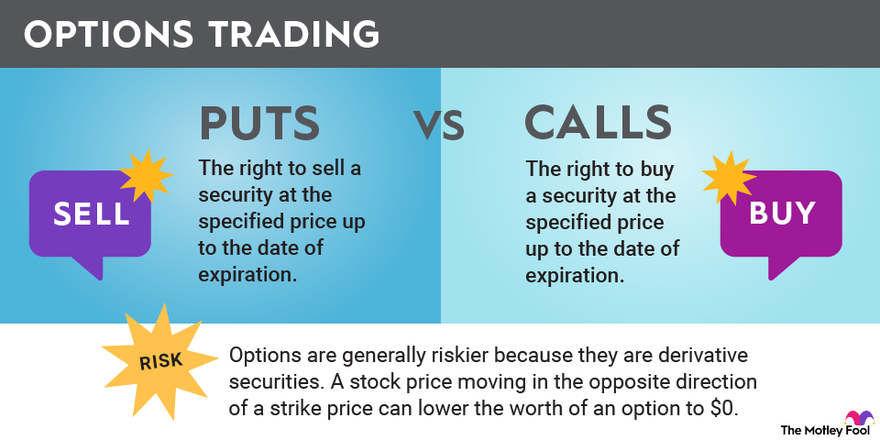Understanding the True Financial Burden
Options trading, a sophisticated and potentially lucrative investment strategy, carries with it an array of expenses that can significantly impact your profitability. Beyond the obvious costs like commissions and regulatory fees, there are numerous hidden and indirect expenses that can easily erode your returns if you’re not fully aware of them. In this comprehensive guide, we’ll delve into the intricate world of options trading costs, unveiling the complexities and empowering you with the knowledge to navigate this financial landscape effectively.

Image: www.fool.com
1. Direct Trading Costs: Unveiling the Explicit Expenses
When venturing into options trading, the most conspicuous costs you’ll encounter are direct trading costs, which encompass commissions, regulatory fees, and exchange fees. Commissions, the payment to your broker for executing your trades, can vary based on the broker you choose, the type of options contract you’re trading, and the volume of your trades. Regulatory fees, such as the Securities and Exchange Commission (SEC) fees and Financial Industry Regulatory Authority (FINRA) fees, are imposed to support market oversight and investor protection. Exchange fees, charged by the exchange where the options contracts are traded, contribute to the operating costs of the exchange and provide liquidity to the market.
2. The Shadow of Margin Interest: A Hidden Cost That Can Haunt
Margin interest, an often-overlooked expense, can eat away at your profits if you’re not trading with enough capital. When you trade options on margin, you’re essentially borrowing money from your broker to increase your buying power, a situation that incurs interest charges. These charges can accumulate swiftly, especially in volatile markets where your positions may fluctuate drastically. To avoid the pitfall of excessive margin interest, it’s prudent to maintain a sufficient cash balance in your account and trade within your financial means.
3. The Time Decay Dilemma: The Silent Thief of Value
One of the most insidious costs associated with options trading is time decay, an unavoidable consequence of the finite lifespan of options contracts. As an option contract approaches its expiration date, its value erodes due to the diminishing probability of the underlying asset reaching the strike price. This time decay, also known as theta, exerts a constant downward pressure on the option’s premium, which can significantly impact your profitability, particularly in short-term trading strategies. Effectively managing time decay requires a deep understanding of greeks, the factors that influence options pricing, and the ability to time your trades strategically.

Image: www.pinterest.com
4. The Implied Volatility Conundrum: A Double-Edged Sword
Implied volatility, a measure of market expectations about the future volatility of the underlying asset, plays a pivotal role in options pricing. Higher implied volatility translates into higher option premiums, potentially benefiting you if the underlying asset’s volatility materializes as anticipated. Conversely, lower implied volatility leads to lower option premiums, which can hurt your profitability if the underlying asset’s volatility exceeds expectations. Managing the impact of implied volatility requires continuous market monitoring, volatility analysis, and a keen understanding of how implied volatility affects options pricing.
5. The Psychological Toll: The Emotional Cost of Trading
While not a direct financial expense, the psychological cost of options trading can have a significant impact on your overall profitability. Options trading, with its inherent risks and potential for substantial losses, can trigger a range of emotions, from exhilaration to anxiety. Fear, greed, and overconfidence can cloud your judgment and lead to poor trading decisions. Managing the psychological aspects of options trading requires self-discipline, emotional control, and a robust risk management strategy that aligns with your trading goals and risk tolerance.
How Much Does Options Trading Cost

Image: successfultradings.com
Conclusion: Empowered with Knowledge, Embark on Your Options Trading Journey
Options trading, a complex and rewarding endeavor, demands a comprehensive understanding of the associated costs, both direct and indirect. By demystifying the hidden expenses and unraveling the complexities of direct costs, margin interest, time decay, implied volatility, and the psychological toll, this guide empowers you with the knowledge to make informed decisions and navigate the options trading landscape with greater confidence. Remember, the road to profitability lies not only in identifying lucrative opportunities but also in skillfully managing the expenses that can hinder your financial success.






